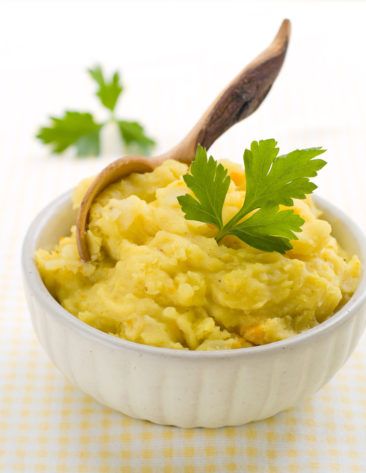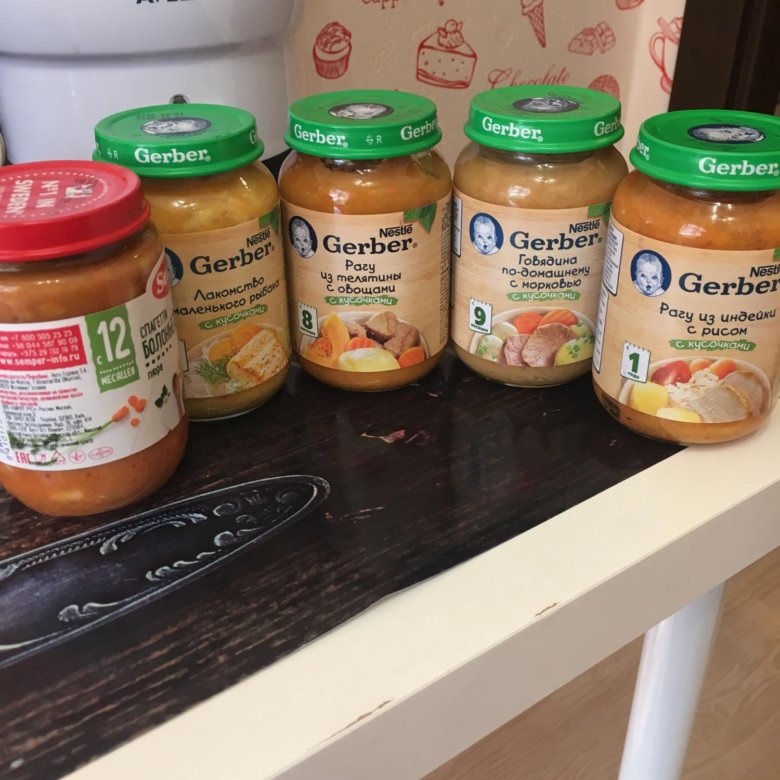Picky baby food ideas
Picky Baby Food Ideas
Has your baby been rejecting food at mealtime? If so, you’re not alone. Babies often have highly discerning tastes that may come off as “picky eating.”
Image by Stephen Andrews
The term ‘picky eater’ is often used disapprovingly by parents and caregivers to describe a variety of eating behaviors. Some caregivers have expectations of how much food needs to be consumed by their little one, and label their child ‘picky’ if less food is eaten.
It’s a completely normal behavior for your baby as you help them discover new food flavors and textures. Trying out different foods and textures can help you find what they will eat during these phases.
When picky eating and jags beginPicky eating often shows up around a year of age but may happen sooner. Your baby’s appetite and food intake varies by meal and/or by day. Today’s favorite food is rejected tomorrow, and the preference for only one or two foods, commonly known as food jags, may begin.
Other caregivers experience food jags with their child, where only one or two foods are acceptable and this may be called ‘picky eating.’ Sometimes toddlers just want to be active, and sitting in the highchair keeps them from their preferred play which earns them the ‘picky’ emblem.
Remember that these eating patterns are normal. Your child’s food intake needs depend on their level of physical activity and what their body needs. It’s important to continue monitoring their weight and ask their pediatrician if you have any concerns.
The best defense is to introduce a variety of tastes at a young age to acclimate the developing palate toward adventurous eating.
How you can help baby picky eatersThe most important thing you can do when you perceive your child as being a picky eater is to continue to offer a variety of healthy meals on a regular schedule. The selection of foods offered should also include previously rejected foods.
It’s important to remember that your baby is being introduced to a variety of flavors and developing tastes, and it’s perfectly normal if a food is not immediately accepted.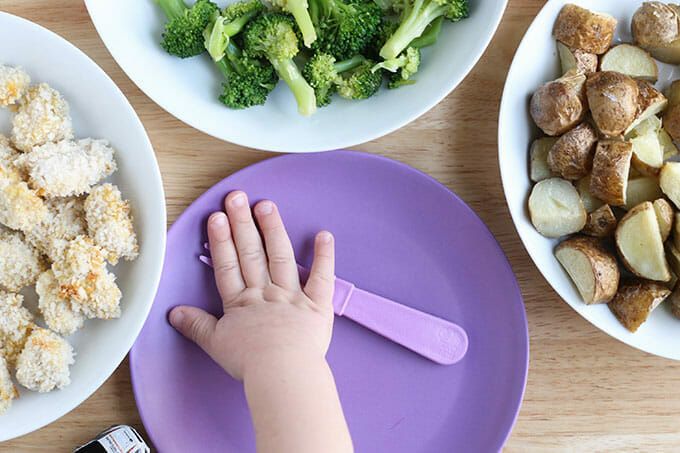
The worst thing that caregivers can do for themselves and their children is to make food and mealtime a battleground. Mealtimes are meant to be pleasant, and forcing your little one to eat can actually cause him or her to become pickier and eat less.
Likewise, avoid bargaining with your child to take one more bite. They will quickly learn how to negotiate bites of food if the reward is dessert. That is a losing proposition for you both. Also avoid unhealthy options for the sake of getting them to eat as this can cause them to not develop a taste for healthier options.
Accept that your child will eat when they are hungry and they will decide how much is enough. This may be easier said than done. However, if you can stay the course rather than following your toddler around, hoping he will take a bite of something (or anything) you will find yourself in a better place.
Food ideas for a picky eaterTexture and flavor variety
As you’re introducing your baby to solids, they may still prefer purees or liquids alongside or entirely at times. It can be useful to find what soft solid food textures your baby prefers such as banana versus sweet potato or a soft crisp.
It can be useful to find what soft solid food textures your baby prefers such as banana versus sweet potato or a soft crisp.
It can be useful to introduce your baby to one-ingredient solids for 3-5 days. This can help them get familiar with the new foods and allow enough time for them to try it and see if it’s a flavor they really do not like. If they don’t eat enough of the new food, be sure to supplement their meal with their favorite food puree pouch or other meal you’ll know they’ll eat.
Some food flavors and textures to try:
- Banana cut into small pieces
- Chicken chopped finely
- Pasta well-cooked beyond requiring chewing
- Potato cooked and cut into small pieces
- Scrambled eggs cut into bite-size pieces
Test food temperatures
Sometimes babies prefer certain flavors warm and others cold. Your baby may also take to overall warmer foods more than cold or vice versa. It can also depend on their environment temperature.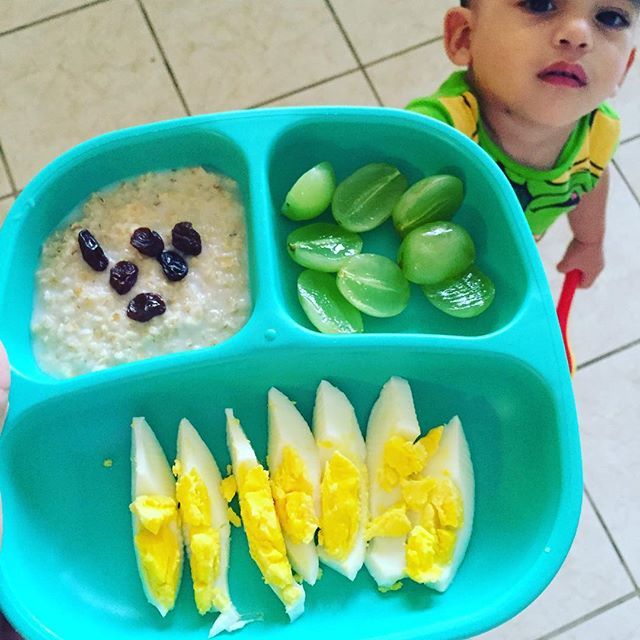 For example, you may want to cool them down on a hot day.
For example, you may want to cool them down on a hot day.
As you’re introducing new flavors and textures, be sure to experiment with food temperature as well to feel out their preferences. This can help you with the success of them taking to current and future foods you try out.
Get your baby’s preferred food staples delivered to your doorPicky eaters will often have a handful of consistent foods that they will eat regularly with no qualms. You just have to discover which ones those are and then keep them on hand to ensure they are eating enough while you help them explore new foods to expand their palette.
You can skip the grocery line and get a wide variety of flavors and textures in convenient baby food pouches sent to your home.
From fruits and veggies to protein-packed foods and dairy-free options, you can find flavors baby will love. And you’ll know that you’re feeding them high-quality ingredients as all Sprout’s foods are organic & non-GMO with no concentrates or preservatives.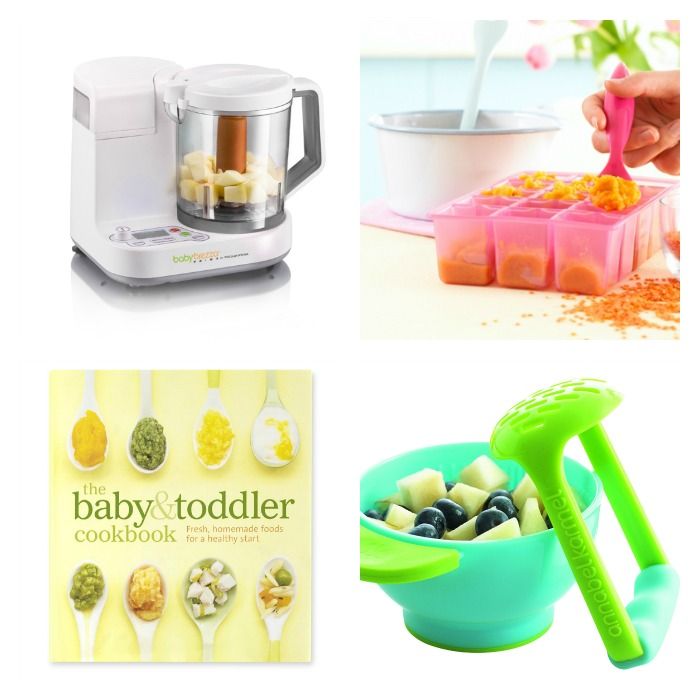 Discover your little one’s new favorite foods today!
Discover your little one’s new favorite foods today!
Like this article? Share on Twitter, Facebook, LinkedIn
10 Easy Baby Food Recipes: Homemade & Healthy
By Anjali Shah on
This post may contain affiliate links. As an Amazon Associate, I earn from qualifying purchases. Please read my disclosure.
It is so easy to make your own homemade baby food recipes — and most of the time, making baby food at home will be healthier and cheaper than store bought! This is your guide to making healthy baby food at home that you can feel great about giving to your little one!
Many of you know that I made homemade baby food recipes at home when my kids first started on solid foods. I’ve gotten so many questions about whether it’s really that easy to make your own baby food at home. And trust me – it is!
Making your own baby food recipes can be enjoyable and isn’t difficult, even when you’re busy or tired.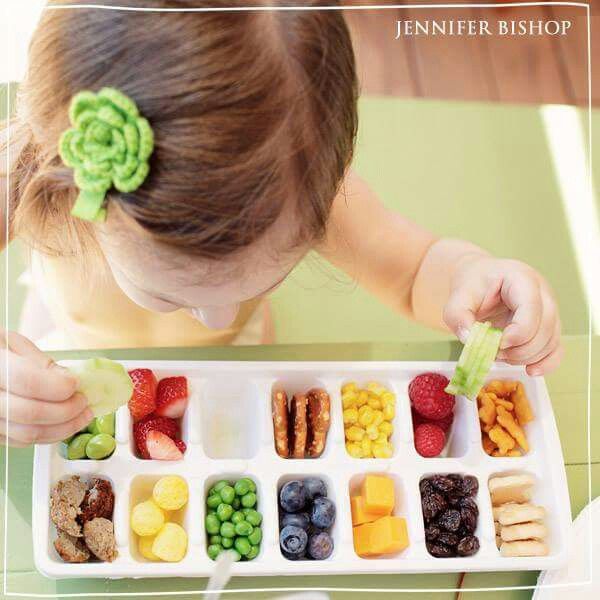 There are really only three steps to making great baby food at home: steam, puree, and freeze.
There are really only three steps to making great baby food at home: steam, puree, and freeze.
Once you’ve made a few basic purees, you’ll be eager to try some more complex recipes with additional ingredients, or even create your own concoctions to suit your baby’s tastes.
Making your own homemade baby food recipes is a great way to discover which foods your baby particularly enjoys, as well as introducing them to a variety of flavors in a creative way that fits your budget, lifestyle, and locally-available ingredients.
These are some of my must-have baby food recipes for purees, made with healthy, easy-to-find ingredients. You’ll never find added sugar in my baby food recipes.
I guarantee that making baby food at home will be cheaper than buying expensive pouches, which often contain significant amounts of sugar from fruit purees or even fruit juice concentrate.
What Foods Are Best to Puree?
You can literally puree pretty much any food for your baby! The best foods to start with are sweeter vegetables or less-sweet fruits including:
- Avocados
- Green Beans
- Peas
- Butternut Squash
- Zucchini or Carrots
- Pear
- Sweet Potato
- Apples
Once your baby has mastered these purees, you can move onto more “pungent” veggies, tart fresh fruit, and proteins like:
- Broccoli
- Spinach
- Cauliflower
- Berries
- Stone Fruits and Cherries
- Lentils
- Chickpeas / Beans
- Meats (if you are planning to give your baby meat)
- Whole Milk Yogurt and Cheese
You can introduce grains and sweeter fruits much later so that your baby doesn’t get too used to foods with a sweet taste first (which will make them more likely to reject green veggies which have stronger flavors).
So once your baby has been exposed to a large variety of less-sweet fruits and veggies, you can introduce foods like:
- Single-Grain Cereals like Oats, Barley, Wheat, Quinoa. I don’t recommend rice cereal unless your pediatrician specifically tells you to use it because rice cereal is usually made with refined grains, is low in fiber, and doesn’t have many nutrients. I recommend making baby cereal at home (even though there are store bought versions available) to avoid heavy metal contamination – and because it’s so easy!
- Ripe Bananas
- Papaya
- Pineapple
- Mango
You can also add warm spices to your baby’s food at any point — spices like: cinnamon, nutmeg, turmeric, cumin, coriander, paprika, garlic powder, ginger powder, etc. are all great to add new flavors and to expand your baby’s palate!
What is the Best Way to Store Homemade Baby Food Purees?
I recommend freezing your homemade baby food in ice cube trays for storage. I love these Mumi & Bubi Trays because they come with airtight lids and hold a ton of baby food!
I love these Mumi & Bubi Trays because they come with airtight lids and hold a ton of baby food!
I would freeze the baby food in these trays, and then once frozen, I’d pop out the puree cubes and transfer them to an airtight container, or to zip-top freezer bags.
Is Homemade Baby Food Healthier?
Yes it is! This is because when you make baby food at home, you can control both the quality of the ingredients and the types of things being included in your baby’s food.
Since your homemade baby foods don’t have to be shelf stable, you don’t have to worry about any preservatives or stabilizers in the food you’re giving your baby.
Additionally, most pre-made baby food is very fruit-forward which makes it quite sweet and high in sugar. This can make babies who eat pre-made food more likely to only develop a liking for sweeter foods, which could make them pickier eaters later on.
Note: Not all pre-made baby food is bad and there are some healthy vegetable-forward pouches available today.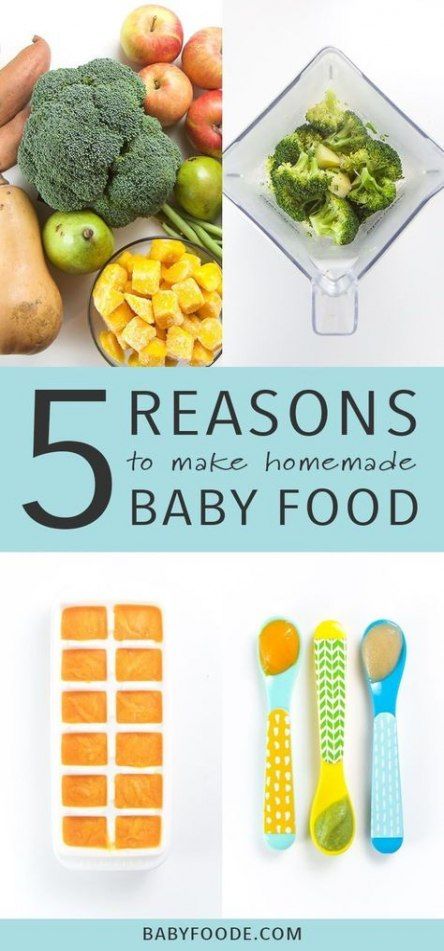 These can be good options if you’re on the go or in a bind and need food fast! You can see my list of the healthiest baby food pouches here.
These can be good options if you’re on the go or in a bind and need food fast! You can see my list of the healthiest baby food pouches here.
How Do You Make Baby Food Recipes at Home?
All you need are the right tools – many of which you probably already have in your kitchen, and knowing the method, which is as easy as: steam, puree, freeze.
You don’t need a fancy baby food maker to do any of this stuff – in fact, I recommend against buying a special baby food maker because it’s a pretty pricey purchase for something you can’t repurpose for anything else. I like investing in kitchen tools that can grow with you and your family.
Equipment Needed
#1: Invest in a Good Blender or Food Processor. I recommend getting one that you can use for smoothies and other “grown up” recipes – so the purchase is worth it! Any blender will work, but my favorite is the Vitamix.
It purees everything SO smoothly that the consistency exactly mimics the thin consistency of the baby food pouches at the grocery store. And you don’t have to peel any of the fruits/veggies (except for the obvious like bananas, oranges, pineapples, melon, etc. – that have a hard shell) because the Vitamix is so powerful that it pulverizes all of the peel of most fruits/veggies to retain all of those nutrients for your little one.
And you don’t have to peel any of the fruits/veggies (except for the obvious like bananas, oranges, pineapples, melon, etc. – that have a hard shell) because the Vitamix is so powerful that it pulverizes all of the peel of most fruits/veggies to retain all of those nutrients for your little one.
It can also make chunkier meals for older babies or when your baby transitions away from purees. Lastly, you can use it for so many other things like making soups, smoothies, pancake batter, falafel mix, brownie batter, etc. – the list goes on and on! I bought one when I started making my kids’ baby food and absolutely LOVE it and use it all the time (still!)
#2: You need covered ice cube trays. You could just take regular ice cube trays and cover them in plastic wrap, but I found that ended up with my purees getting freezer burn which wasn’t great. I love these Mumi & Bubi Trays – which store / stack really well, have tight lids, and hold enough baby food for about 1 month!
#3: A Steamer Basket.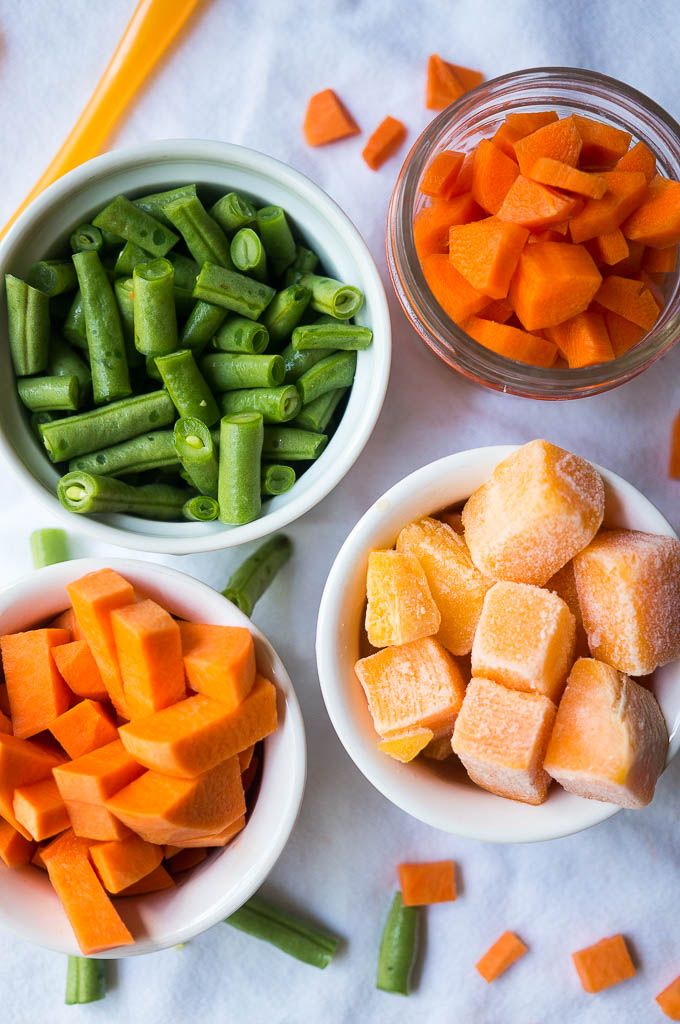 It’s worth it to have a steamer basket that can fit inside any pot. Steaming fruits/veggies in bulk is key to making baby food easy and quick to make at home – and a steamer basket can make all the difference!
It’s worth it to have a steamer basket that can fit inside any pot. Steaming fruits/veggies in bulk is key to making baby food easy and quick to make at home – and a steamer basket can make all the difference!
You also need a good, large pot – but literally any pot will do. And that’s pretty much it! Then you can literally make any baby food recipe at home for less cost, less time and a healthier puree for your little one than a store bought version.
How to Make Homemade Baby Food Recipes – Step by Step
- Wash the fruits and veggies you are planning to puree.
- Chop them into 1/2 inch sized cubes and put them in a pot with just enough water to almost cover them. Alternatively, put them in a pot with a steamer basket to steam them.
- If you are steaming them, steam until fork tender (easy enough to mash). If you are putting them in a pot with water, just cover the pot with a lid and bring it to a boil. Then lower the heat and simmer, covered, until the fruits or veggies are fork tender.

- If steaming, put the fruits/veggies into a blender with some of the liquid you used to steam them. If you boiled your fruits/veggies, transfer everything from the pot into the blender (so you don’t lose any nutrients that might have leached into the water while you were boiling the produce).
- Puree the fruits/veggies until smooth. Transfer to ice cube trays and freeze.
- Once frozen, pop the cubes out and transfer them to freezer-safe zip-top bags.
- To reheat, simply defrost in the microwave or in a small saucepan on the stove. Serve your homemade puree at room temperature.
What Foods Should You Give Baby First?
I can pretty much guarantee that your baby will happily eat fruit purees, because they contain a significant amount of natural sugar.
Babies are naturally inclined to enjoy sweet tastes (remember, breast milk is full of lactose, which is a sugar!), so exposing them to low-sugar vegetables early on is really important for developing their palates.
Once your baby is ready for solids, around 6 months of age, I recommend introducing fruits and vegetables in the following order:
- Avocado, carrots, green beans, sweet potato, butternut squash, pears, apples, broccoli, spinach, cauliflower.
- Then introduce any other fruits and vegetables that you want, and eventually add in fish and meat.
10 Healthy Homemade Baby Food Recipes for Beginners
1. Baby’s First Food: Avocado Puree
Millennials may be famous for their love of avocados, but guess what? Babies love avocados, too! In fact, avocado was the first solid food that we gave both of our kids. It’s incredibly easy to make an avocado puree, and it’s highly nutritious, too.
Avocados really are a great choice for baby’s first foods — they are delicious, flavorful, and have a great texture. Even better, they’re packed with 20 vitamins and minerals, including folate, fiber, potassium, vitamin E, and iron, as well as plenty of “healthy fats” that will help with your baby’s brain and nervous system development.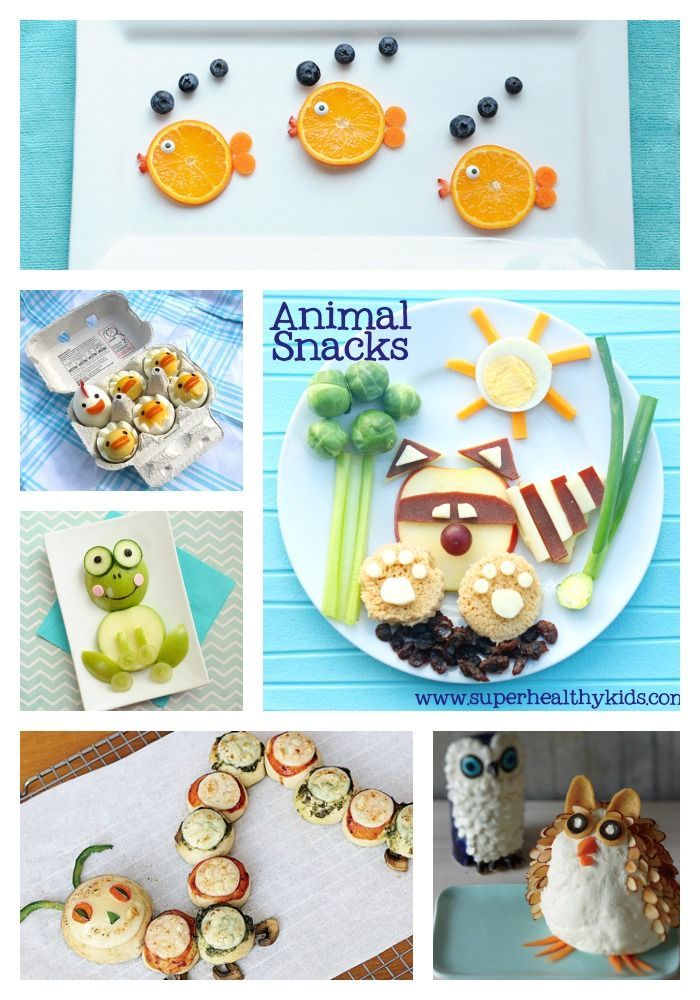 Chances are, avocado will soon become one of your baby’s favorite foods!
Chances are, avocado will soon become one of your baby’s favorite foods!
VIEW THIS RECIPE
2. Carrot Puree
After avocado, carrot is an excellent food to introduce to your baby as you start giving them solids for the first time. Carrots are naturally sweet and are great for combining in purees with green vegetables in order to make them a little more enticing. All you need to do for this recipe is peel the carrots, cook them for 6-8 minutes, and then puree! Not only are carrots full of Vitamin A, which helps promote healthy skin and eyes, but they are also easy to digest and very unlikely to cause an allergic reaction.
VIEW THIS RECIPE
3. Green Bean Puree
Now it’s time to bring in some greens! I recommend starting with green beans to introduce your baby to the taste of green vegetables. They are low in sugar but full of Vitamin A and fiber. I have to admit that my kids were not enamored with green beans from the start, until I started mixing them with organic plain yogurt.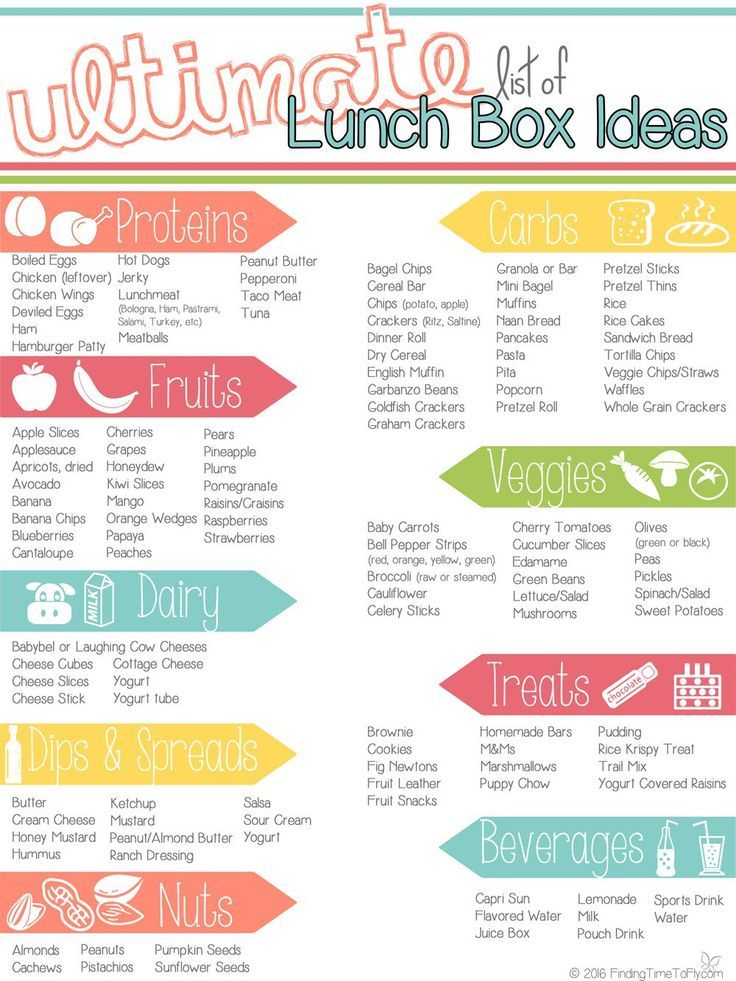 Once you’ve introduced green beans on their own, you can also combine them with carrots for an even tastier puree, but it’s important that babies first get accustomed to eating not-so-sweet foods.
Once you’ve introduced green beans on their own, you can also combine them with carrots for an even tastier puree, but it’s important that babies first get accustomed to eating not-so-sweet foods.
VIEW THIS RECIPE
4. Sweet Potato PureeOrange vegetables like sweet potato, butternut squash, and pumpkin are super healthy options, packed full of carotenoids, vitamin C, potassium, and fiber. And what’s more — babies tend to love them! You can prepare them so many different ways, including microwaving, steaming, or boiling. However, my favorite cooking method is to roast sweet potatoes in the oven so that they begin to caramelize, and then pureeing.
VIEW THIS RECIPE
5. Butternut Squash Puree
Butternut squash is a delicious and extremely nutritious veggie, packed full of Vitamin A, Vitamin C, fiber, and potassium. As with sweet potatoes, I recommend roasting the butternut squash in the oven for an hour so that it becomes caramelized. After roasting, peeling off the skin and putting the squash pieces into a blender can get a bit messy, so you’ll want to make this in bulk. Don’t forget to line your baking tray with parchment paper for easier clean-up!
After roasting, peeling off the skin and putting the squash pieces into a blender can get a bit messy, so you’ll want to make this in bulk. Don’t forget to line your baking tray with parchment paper for easier clean-up!
VIEW THIS RECIPE
6. Pear Puree
Once your baby has developed a taste for green and orange veggies, it’s time for a real treat — pears! Not only do pears taste great, but they’re also full of nutrients like fiber and Vitamin C, which help to prevent constipation and promote a healthy immune system, respectively.
Pears are also fantastic for mixing with other foods that your baby might not be so keen on, such as green beans. We get through a lot of pear puree in my house (it’s great mixed with oatmeal!), so I always make this in bulk.
VIEW THIS RECIPE
7. Apple and Prune Puree
Poor prunes — so unloved and misunderstood! If you find yourself walking past the prunes at the grocery store without a second thought, consider this: prunes are a fantastic food for babies! Quite simply, prunes are dried plums, and they’re full of antioxidants. And just as their reputation suggests, they really do “keep things moving” so that your baby doesn’t become constipated. My kids were more interested in prunes when I mixed them with apples. This prune and apple puree is also great with yogurt, oatmeal, or combined with green vegetables to give them a little natural sweetness.
And just as their reputation suggests, they really do “keep things moving” so that your baby doesn’t become constipated. My kids were more interested in prunes when I mixed them with apples. This prune and apple puree is also great with yogurt, oatmeal, or combined with green vegetables to give them a little natural sweetness.
VIEW THIS RECIPE
8. Broccoli, Spinach, and Cauliflower Puree
You’ll be hard-pressed to find a more nutritionally-dense puree than this mixture of broccoli, spinach, and cauliflower, which is full of vitamins and minerals, including iron. This puree also contains loads of phytonutrients, which are known to have anti-cancer properties.
I recommend introducing this puree in small amounts, early in the day, because it contains a lot of fiber. Fiber is great, but it could potentially lead to gas or stomach upset if your baby eats too much, so you’ll initially want to avoid this puree close to bedtime. Once your baby gets used to these veggies though, you can serve it anytime you’d like! If the taste of the greens is too overpowering for your baby, consider adding a little bit of organic plain yogurt and some pear puree.
VIEW THIS RECIPE
9. Zucchini, Apple, and Carrot Puree
This puree is guaranteed to be popular with your little one — it was certainly one of my kids’ favorites. Zucchini and carrots are mild and fairly sweet veggies, and with the addition of two organic Fuji apples, this flavor combination is even more delectable! It’s a perfect puree to mix with your baby’s oatmeal.
VIEW THIS RECIPE
10. Pea Puree
Peas contain lots of vitamins, specifically Vitamin K, which is important for bone health, and Vitamin B6 and folic acid, which promote a healthy heart. In order to ensure that your purees retain as many nutrients as possible, avoid overcooking green veggies. Ideally, you should cook vegetables so that they stay bright green. Steaming them for just 3-5 minutes or boiling them for 3-5 minutes and then submerging them in cold water will help them to stay bright green and retain their chlorophyll. A word of advice: You may want to mix the peas with fruit or sweeter veggies in order to make them more appealing to your baby.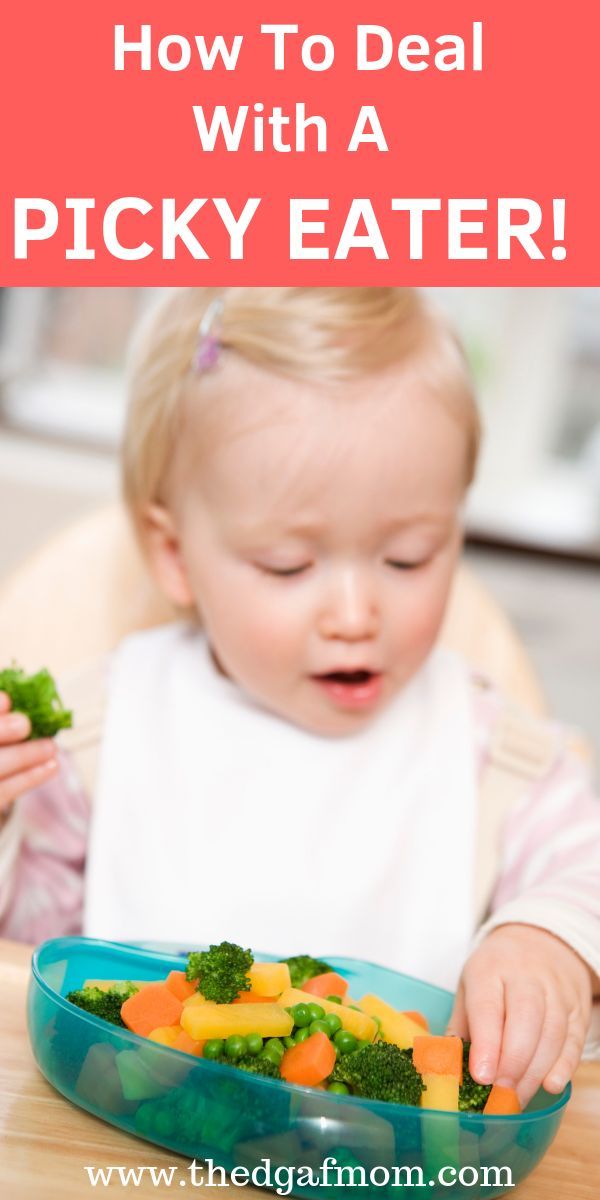
VIEW THIS RECIPE
If you enjoy making these purees — and your baby enjoys eating them! — check out my Super Easy Baby Food Cookbook for more easy homemade baby food recipes!
With over 150 recipes for babies, toddlers, and older kids, you’ll find plenty of ideas for purees that you can make in bulk, ahead of time, so that you never run out of your baby’s favorite foods.
It also includes guidance about mixing and matching ingredients to create the best-tasting purees, all while introducing your little one to a variety of flavors and textures.
And for when you start to transition towards finger foods, you’ll find plenty of toddler-friendly recipes that you can prepare in 30 minutes or less!
I hope this post helped you to navigate the wonderful world of making baby food at home.
Just remember – this is an opportunity to experiment and enjoy introducing your baby to all of the yummy tastes, flavors and textures that solids have to offer! Have fun with it!
More Resources to Make Healthy Homemade Baby Food Recipes!
- The Super Easy Baby Food Cookbook
- Top 10 Baby Superfood Recipes
- A Sample Feeding Schedule For Your Baby (6-12 months)
- 30 Family Friendly Recipes Your Baby Will Love
Feeding a picky eater at age 7
Levchuk Victoria © picky eater She considers the milestone of 7 years to be the main feature, after which the usual age-specific picky eating ends.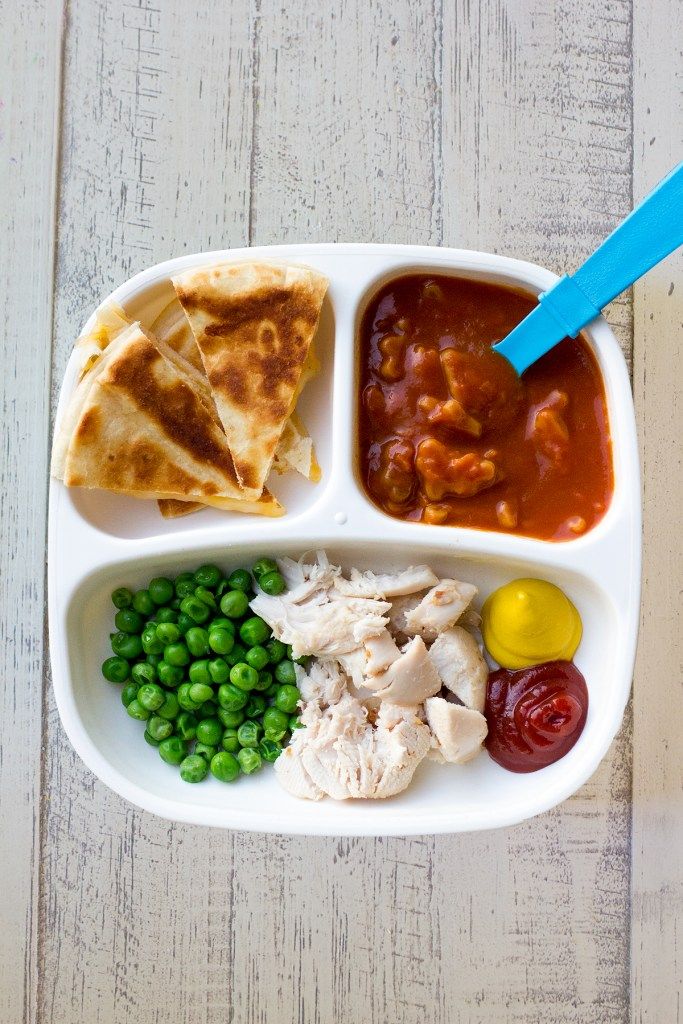 But when it stays and becomes a difficult part of a child's life, it's a test for the whole family. The task of the parent is to help the child correct the fastidious diet. As I wrote earlier, nutrition can always be changed, at any time in your life, there would be a desire. However, in pediatrics and psychology 7 years is considered a really important age , when it becomes easier for parents to agree, convey their truth and at the same time be heard.
But when it stays and becomes a difficult part of a child's life, it's a test for the whole family. The task of the parent is to help the child correct the fastidious diet. As I wrote earlier, nutrition can always be changed, at any time in your life, there would be a desire. However, in pediatrics and psychology 7 years is considered a really important age , when it becomes easier for parents to agree, convey their truth and at the same time be heard.
Moreover, there are fewer sharp emotional outbursts without explaining the reason, now the child is able to control himself and understand many processes inside, as well as tell an adult about it and ask for help.
Table of Contents:
Approximately nutrition begins to change from 6-6.5 years. It is during this period that the child tries new dishes that he previously refused. Here it is important not to miss his desire to expand the diet. Therefore, mothers who suddenly realized that the child's diet is too scarce, you can take a moment and start expanding it. nine0009
nine0009
Why do children get stuck on picky foods?
Some children have learned to negotiate with parents or caregivers and avoid food they don't want to eat.
Other picky eaters have eaten in a negative atmosphere so often that they have reinforced an association that makes them anxious before eating.
Some children have real mechanical, sensory and behavioral problems that make eating uncomfortable, difficult and undesirable. nine0009
These children are difficult. The worst advice that can be given to parents of such children is " just let him get hungry " or " don't feed " or "just keep expanding the diet." Parents have already tried all this and failed.
This year my husband and I decided that a hyperactive child had nothing to do at school, so he was transferred to another group in kindergarten. There are new teachers. It was during the period of adaptation to a new group that I realized that my child's nutrition had changed dramatically. However, the approach of educators played an important role. As it turned out, they used the "one piece, one ladle" tactic. nine0002 “You don’t have to eat everything, I’ll give you half, try, we don’t insist, but it’s customary in our group to eat at least half” . This has borne fruit.
However, the approach of educators played an important role. As it turned out, they used the "one piece, one ladle" tactic. nine0002 “You don’t have to eat everything, I’ll give you half, try, we don’t insist, but it’s customary in our group to eat at least half” . This has borne fruit.
Of course, the fastidious eater didn't want to stand out (the age when you want to be like everyone else) in the group, plus he was new, the children looked at him. He began to try everything that they give. As a result, pea soup, fish cakes, cottage cheese casserole and much more have steadily entered his diet. In kindergarten, he began to eat well. And now I have a problem, how to learn how to cook pea soup without peas, and a casserole without cottage cheese. nine0009
My child is stubborn (looking for ways to deceive himself), he came up with such versions that he eats pea soup, but there is no peas, and a casserole with raisins, but there is no cottage cheese. My tactic is just to ask about taste feelings, like it, dislike it, and which ingredient did you like more, and what can be added, and how about salt, sugar, etc. I try to focus his attention on the taste so that he understands that it looks so-so, but tasty, bright, juicy, powerful, etc. He is visual and perceives the plate for color, appearance, and if this is all BEEE, then he will not even take a spoon in his mouth. So I'm working on perception so that he understands, it may not look familiar, but it may be divinely delicious, just try it. And he has to fight with himself just to put a spoon in his mouth, and while he plays in his favor. I am proud of my son at such moments. nine0009
I try to focus his attention on the taste so that he understands that it looks so-so, but tasty, bright, juicy, powerful, etc. He is visual and perceives the plate for color, appearance, and if this is all BEEE, then he will not even take a spoon in his mouth. So I'm working on perception so that he understands, it may not look familiar, but it may be divinely delicious, just try it. And he has to fight with himself just to put a spoon in his mouth, and while he plays in his favor. I am proud of my son at such moments. nine0009
At home I cook most of his favorite meals. Yes, you have to adjust to his diet. But the main thing for me is that he eats, and does not hysteria at the table from hopelessness. So I have the standard pale potato soup or borscht almost every day. But he began to adequately perceive the variations of these dishes. Those. borsch can be with kohlrabi, and not with white cabbage, or borsch with beets, or soup with potatoes and noodles, soup with potatoes and rice, etc. The main thing is that there should be potatoes in the composition of the dish, and how much I put it there again, I can make potatoes the basis of the dish or a secondary element. Also, meat or fish broths are also not the main thing for him, the main thing is without an orange color (although carrots on a fine grater go well in soup). nine0009
The main thing is that there should be potatoes in the composition of the dish, and how much I put it there again, I can make potatoes the basis of the dish or a secondary element. Also, meat or fish broths are also not the main thing for him, the main thing is without an orange color (although carrots on a fine grater go well in soup). nine0009
In short, I have a list of his favorite dishes and there is one dish on the table that a picky eater will always eat. In addition, I make a second dish that he will eat 50/50 (mostly a salad, he is still getting used to eating it every day), then there is a dish that he will eat at 25%. Yes, you have to cook a lot and varied. But I am also a person, so dumplings, khinkale, pancakes with apples and fruits with cheese are an option when I am too lazy to cook, and I need to feed the child. Every child has a love for quick convenience foods of some sort, a life saver for a tired mom. I use it! And I don't feel guilty. I also do not advise you to suffer, especially if the child eats them 1-2 times a week. nine0009
nine0009
Tactics for Correcting Picky Eating
As the child matures, the methods of expanding the diet also mature. I'm already talking seriously with him, showing more complex nutrition films.
For now, I plan to continue adjusting his diet in the following ways:
- Cooking together. Yes, I often ask him about his food preferences. My only request is to let me know about your desires in the morning or in the evening so that I can plan the menu and buy new ingredients. He is still learning this. Yes, we cook together, I'm trying to get him involved in it. But he is my theorist, which for me does not fit in my head. He listens, remembers, and when I'm not in the kitchen, he can cook. It's scary, but my husband says that at his age he ate himself and alive, and I live with my fears. nine0056
- I try to explain his condition. When he does not want to eat this or that dish, I will forgive him to describe sensations and feelings.
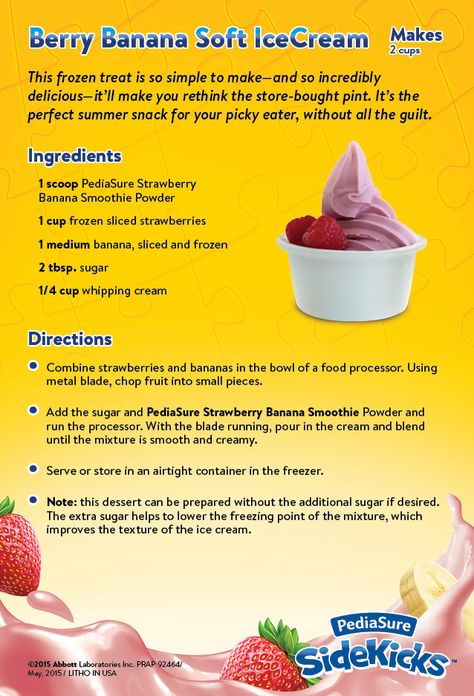 It seems that I already got him with this, but in the end he can clearly say why he is not ready to eat this or that product. With this practice, we found out that the orange color reminds us of a poop and we don’t want to eat it, it’s disgusting.
It seems that I already got him with this, but in the end he can clearly say why he is not ready to eat this or that product. With this practice, we found out that the orange color reminds us of a poop and we don’t want to eat it, it’s disgusting. - I control snacking. The child became very independent, so there was a period when I found him with an open refrigerator and a piece of cheese in his hands. Make a sandwich quickly. As you understand, such snacks are not acceptable between main meals, so the cheese was put away in the refrigerator, and an apple was given to the hands. Offended! Where without it! nine0056
- Stopped buying junk food. Just don't buy, because now he can remember where his mother hid, and eat on the sly. And this is the norm for this age. Now I eat sweets when he is in the garden, eh! But my husband cultivates in me the feeling of "bought - share with everyone!". And the youngest is in the stage of “try not to let it - get hysterical!”, so we live without sweets.

- There is one meal for everyone at the table. There is no such thing, you have pasta, and everyone else eats rice. We have everything for everyone! I only take into account the nuances! If the younger one is served with sour cream, then the older one likes a pure product. I plan to continue with my 3 course policy: he will definitely eat, not sure, but he will and most likely refuse to eat. nine0056
- It is ideal to create menus all the time. But this year is just a planning ambush. I have already decided not to torment myself or my family, I will start compiling the menu from January 2021. Maybe a better year. The menu helps the child get used to the fact of taking a new product. However, a sharp rebuff from the child is possible, it is necessary to endure.
Click on me!!!!
- I will use the interests of the child. My child is fond of children's magazines, began to buy with a culinary page. We have already prepared a cake "Potato" from cookies, Smoothies from fruits, so I plan to continue.
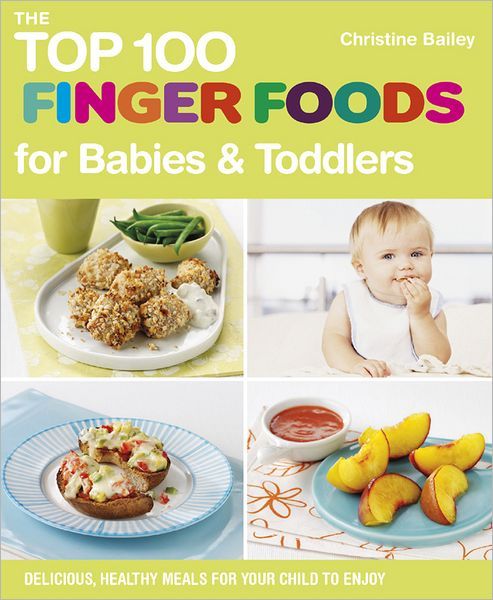 Parents only benefit from children's hobbies, they just need to think about how to connect this with food and the expansion of nutrition. nine0056
Parents only benefit from children's hobbies, they just need to think about how to connect this with food and the expansion of nutrition. nine0056 - Silence at the table when a picky eater tries a new product. Precisely to be silent is not the age when our praise is perceived as joy. Now we praise or rejoice when he himself shared his joy, he himself announced his victory. Alas, the child enters the stage of shyness. Of course, we look at our child.
- Do not lecture at the table. I try not to pay attention to how he eats, what he eats, etc. at the table. I lecture after meals. Yes, it’s impossible to get rid of the teacher’s tone, but I try to reduce scientific data to the maximum. nine0056
- Any problem with his nutrition should be solved together. It's bad when mom made up her mind and posted the solution to a picky eater. It is necessary to communicate with the child, to understand what he wants, how he plans to resolve the issue.
 We are now at such an age that isolation from friends due to nutrition can help in expanding the diet. Pain or resentment can be a good helper to work on yourself and overcome picky eating.
We are now at such an age that isolation from friends due to nutrition can help in expanding the diet. Pain or resentment can be a good helper to work on yourself and overcome picky eating.
These are not all possible ways to make a picky eater omnivorous, if you have any ideas, share with me, I will be glad to comments. nine0009
The diet of a fastidious eater at the age of 7 has significantly expanded compared to 2 years, when he abruptly stopped eating everything that is possible with me. Now it’s much easier for me to come up with new dishes and cook them. Over the past 6 years, I have learned a lot about baby food. But the most important thing is to ignore the tantrums both externally and internally. It’s hard to get used to it, it’s even harder to understand that you are not a “bad mother”, you are just lucky to raise a unique child.
Be patient and if it's hard to hold back, then go to the toilet and count, breathe, count until you let go. nine0009
What to cook for children, menu from 1 to 7 years old: 350 recipes with photo
Recipes for meals that can be prepared for a child with step by step photos. Breakfasts, lunches, dinners, afternoon snacks. Dishes like in kindergarten. Proven recipes with cooking times
Breakfasts, lunches, dinners, afternoon snacks. Dishes like in kindergarten. Proven recipes with cooking times
Here you will find many suitable recipes for children to prepare for breakfast, lunch or dinner. Read more
Salad with carrots, apples and dried fruits - a great option for a children's menu from 2 to 6 years old.
Mannik is one of the simplest and most economical types of baking. It is the easiest to prepare. nine0009
The recipe for a cake with raisins in milk is very simple. You don't need to beat anything for him.
An excellent low-calorie no-bake dessert for the New Year is panna cotta.
The low-calorie version of the Potato cake will never replace the original.
Quince has a pleasant aroma and delicate fruity taste, and can be used to make a variety of dishes, including delicious desserts.
These fragrant yeast-free dough tarts with juicy apple filling bake very quickly. nine0009
Sweet braided yeast dough with cinnamon - soft inside, effective, with caramelized crispy edges.
Royal cheesecake, despite its name, is more like a sweet pie with crumbly crispy dough and a delicate cheesecake-like filling.
A wonderful recipe for meatballs for children is hedgehogs, I cook them in a pan.
Cheesecakes with cottage cheese from yeast dough - a wonderful weekend breakfast. nine0009
Funny hedgehogs with gravy will surely please your kids. Light sour cream sauce goes well with unusual meatballs.
The recipe for the most delicious cake - this, of course, sounds subjective. But yes, I have it.
This simple and delicious cottage cheese cake recipe uses only available and inexpensive ingredients.
Curd cake with raisins bakes quite quickly in the oven and will become a lifesaver for the arrival of guests and home tea drinking. nine0009
Carrot cake according to the classic recipe is prepared quite simply. And the products for him are also simple.
Meringue is a sweet, crunchy dessert made with minimal ingredients.
This grated cottage cheese pie always pleases my family with its aroma and taste, I bake it in the oven.
Many people remember from childhood the taste of tender cake Mishka in the north. Thin shortbreads soaked in fragrant sour cream with vanilla and a light crunch of walnuts. nine0009
Grated shortcrust pie with apple from childhood. Now more and more people are looking for recipes for fashionable macaroons and canelli, and earlier our mothers and grandmothers baked the simplest pies that were and remain insanely delicious.
Delicious, simple and fast, and made from affordable ingredients! These mini cupcakes will delight all lovers of sweet homemade pastries.
Carrot sponge cake according to this recipe is perfect for making cakes, pastries and all kinds of desserts. nine0009
Pie in a hurry, when there is no time, but you really want sweet pastries.
Today in supermarkets you can buy sweets for every taste, but the composition on the package is often frightening with the amount of chemistry.
Thinking out what to cook for a child is another quest, because food should be both tasty and healthy, and meet many more children's whims.
Here you will find many suitable recipes for children to prepare for breakfast, lunch or dinner. nine0009
For your convenience, we have divided the recipes into categories: breakfasts for children, soups for children, side dishes for children, dinners for children, desserts for children.
There is also a category of recipes “how to hide vegetables for children in baking” – for those mothers whose children cannot stand everything healthy and prefer to eat only sweets.


